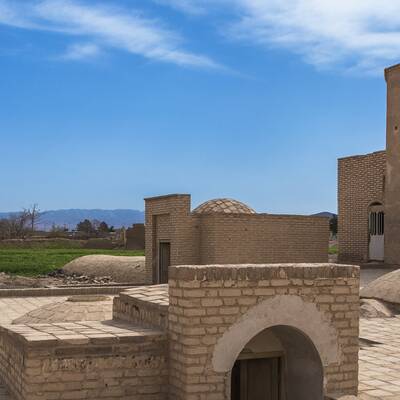
Firdous Anthropology Museum
FerdowsThe Firdous Anthropology Museum is located in the city of Firdous and is established in the historical building of Kheyrooz Bath. The museum is divided into two sections; The first section showcases local customs, occupations related to the bath, as well as traditional and ancient professions of Firdous, such as blacksmithing, felting, cupping, and barbering. The second section highlights the architecture and structure of the bath. Additionally, the museum includes rooms like the sitting area, kitchen, and gallery. The museum has a total area of 1,200 square meters, with the surrounding area covering 2,500 square meters.
Kheyrooz Bath is a historical structure dating back to the Safavid era. After being selected as a site for the Anthropology Museum, it underwent restoration and renovation to transform into a museum. The restoration process concluded in the summer of 1391 (Iranian calendar), and the Firdous Anthropology Museum was inaugurated during the Fajr decade of 1391.
This historical site is situated in Firdous, between Sahab al-Zaman Square and Golshan Square, on the southern side of the mausoleum of Imamzadeh Mohammad and Imamzadeh Ibrahim. It was officially registered as one of Iran's national treasures on Tir 5, 1384 (Iranian calendar) with registration number 11989.
Kheyrooz Bath is one of the historical structures in your city. In recent years, it has been converted into an ethnographic museum after renovation and restoration. This building consists of two sections: the customs and traditions of the bathhouse in the area and the traditional occupations of Ferdows. This bathhouse suffered severe damage in the earthquake of 1347 and remained unusable and abandoned thereafter. The architecture of Kheyrooz Bath is unique, resembling the bathhouses of Sardasht and Kooshk in the region. An interesting feature of its design is that the water enters the men's basin and, after passing through the women's basin, exits the bathhouse. Additionally, this bathhouse has two completely separate sections for women and men. In addition to the damages caused by the earthquake, it faced neglect and deterioration afterwards, with natural and human-induced damages. In 1383, the Cultural Heritage Organization of the county proposed its registration, and it was officially registered as National Heritage No. 1281.

